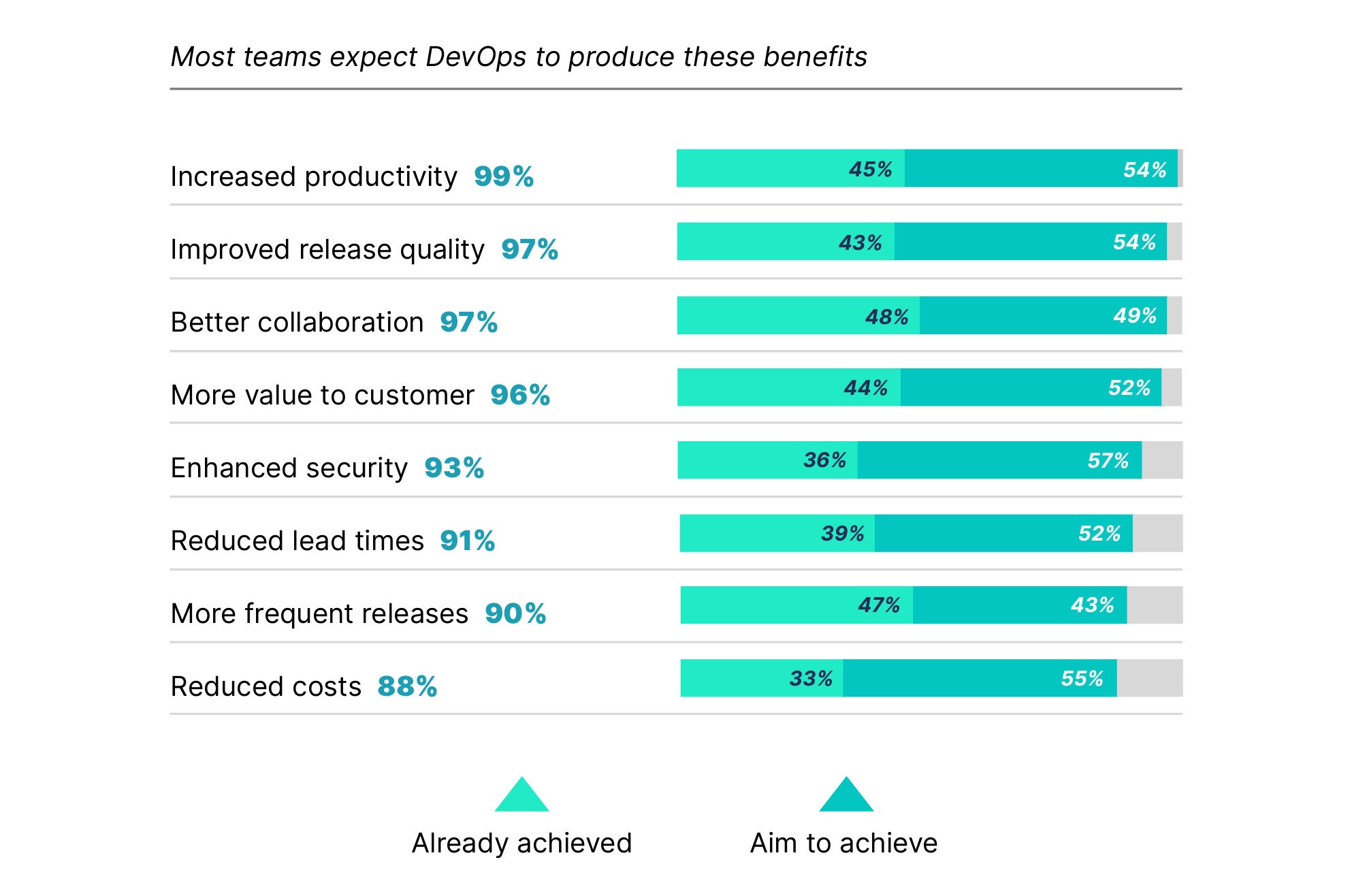Salesforce is the world’s #1 CRM, with more than 150,000 customers globally. But thousands of those customers aren’t seeing the true value of Salesforce. Why? Because the promise of Salesforce is that it can easily be customized to meet exact business requirements, but Salesforce developers and admins simply can’t deliver those customizations quickly enough.
We surveyed more than 1,000 Salesforce professionals and found that by far the most pressing challenge they face is ever-increasing demand from their businesses. On average, Salesforce teams rate their confidence of being able to meet that demand at 2 out of 10.
Salesforce provides incredible tools for developing on the platform, but teams must look elsewhere for the tools to deliver work safely and efficiently. In this article, we’ll explain how to identify if your enterprise is failing to get real ROI from Salesforce, and how you can turn things around.
New York, US
Agentforce World Tour New York
Is your enterprise failing to get value from Salesforce?
Salesforce is a significant investment for any enterprise organization, so securing a return on that investment is obviously a top priority. Salesforce must deliver on the promise of streamlined business processes that produce efficiency savings and boost productivity. It should be a platform that grows with you and accelerates innovation.
Yet there’s no guarantee of success. Many businesses are struggling to achieve the results they expected from Salesforce. Some are in the early stages of their Salesforce journey and finding implementation a challenge; others have been investing in Salesforce for years but sense diminishing returns.
Is your enterprise in either of these camps? Consider these two scenarios:
1. Salesforce implementations that fail
You undertake your Salesforce implementation with a mixture of apprehension and optimism. It isn’t realistic to expect an entirely smooth transition when you’re shifting the foundations of your business systems, but you hope Salesforce will soon show its worth.
So what should you do when the ‘teething problems’ rumble on and on? Opportunities to revolutionize operations seem within reach, but never actually materialize. Customizations of the platform are a tantalizing prospect, but they take much longer than anticipated. Gradually comes a sense of resignation: your Salesforce implementation hasn’t gone to plan.
2. Digital transformation grinding to a halt
Maybe Salesforce has been fundamental to your business operations for as long as you can remember. In the early days there was huge excitement about all the possibilities on the platform. With hindsight you can see the business was a bit too quick off the mark, building any and all user requests — many of them directly in the production org — without much thought of the overall picture or the ideal release process.
Now the early enthusiasm for Salesforce has evaporated. The production org is bloated with countless customizations — most of them redundant but simply hidden from sight rather than being removed. Dozens of developer and sandbox orgs are wildly out of sync, making deployments of work between orgs extremely painful. No one is confident what the release process should look like, but everyone knows one thing for sure: it’s not working.
Governance is a headache. Auditing is practically impossible. The security of your Salesforce org and all the data and metadata it contains is dangerously overlooked. Salesforce was supposed to be the foundation for digital transformation, but now it’s creaking under that burden.
The fundamental challenge of Salesforce
If one of the above scenarios feels familiar, you’re not alone. We’ve spoken to thousands of Salesforce teams and found that these challenges are all too common.
At large enterprises, in particular, the sheer quantity of data and metadata in Salesforce, distributed across a myriad of environments and workstreams, is extremely difficult to manage effectively. The size and complexity of a large business is reflected in its Salesforce org, and both need carefully defined processes for change management.
Various things can be tried to remedy this situation: founding a Center of Excellence to establish and share best practices, getting outside help from consultants, or even starting from scratch with clean orgs. Those approaches may have their merits, but none of them is a complete and long-term solution to the fundamental problem.
So what is the problem? Salesforce teams are hamstrung by poor tooling and an outmoded development model. What’s more, it’s typical for admins and developers to approach building on the platform in entirely different ways that suit their skill set and experience. Collaboration is chronic. The desperate need is to bring those teams together into one agreed development and release process, empowered with tools that work for low-code and pro-code devs.
Salesforce DevOps is the solution
Far from being an intractable problem, the challenge of Salesforce is being solved by enterprises across the globe. Among companies with more than 1,000 employees, 72% have embarked on a journey towards adopting DevOps — a set of tools, processes and practices that makes release management for Salesforce as easy as everything else on the platform. A significant proportion of enterprises (43%) have yet to reach a level of DevOps maturity where automation is powering their release process. But the 57% that already have adopted tools for continuous delivery are seeing the benefits of DevOps and making Salesforce deliver for their business. At large enterprises, 86% of developers and IT leaders say that, since implementing DevOps, they have seen an increased return on investment in Salesforce.
What is Salesforce DevOps?
DevOps is a set of practices that combines software development (Dev) and operations (Ops) to help teams of any size, build, test, and release software faster and more reliably.
The last few years have been an exciting and ever-changing time for teams in the Salesforce ecosystem: there has been a decisive shift to adopt DevOps. It’s more important than ever for teams to improve the way they release, to avoid falling behind the curve.
Salesforce DevOps isn’t exactly like DevOps on other platforms. Managing infrastructure, scalability, hosting, even carrying out some tests (traditionally the responsibility of ops personnel) is all handled by Salesforce itself. But the basic aim remains the same as DevOps for any platform: to break down silos so that everyone involved in building new features is also empowered to help release those features to Salesforce.
DevOps isn’t just about some developers in your business using clever tools to work faster. It’s as much about culture and collaborative ways of working, so excluding low-code developers or allowing an ad hoc approach across the enterprise undermines the very essence of DevOps. The benefits of DevOps can’t be achieved without empowering every contributor to Salesforce development and standardizing on DevOps tools across the enterprise.
Taking a new approach to Salesforce development and releases can set your business on a trajectory towards DevOps maturity that produces clear benefits.

Why is Salesforce DevOps so important for your enterprise?
Companies won’t get the value they want from Salesforce without their teams adopting DevOps.
DevOps improves everything. By releasing more reliably and more frequently, Salesforce teams can deliver value to the business sooner. The quality of work also improves, with fewer bugs and service disruptions. DevOps teams are also better at restoring quickly whenever things go wrong in production — especially where backups have been tightly integrated into the wider development and release process. DevOps can even play a pivotal role in helping businesses go public by helping organisations achieve regulatory compliance.
Optimize business value, cost and risk management with DevOps
Book a consultation with Gearset today to find out how you can accelerate digital transformation with a purpose-built enterprise Salesforce DevOps solution. Gearset’s State of Salesforce DevOps survey found that 43% of enterprises are falling behind on DevOps adoption. But implementing DevOps doesn’t need to be hard. In fact, the best approach has been proven: taking one step at a time.



